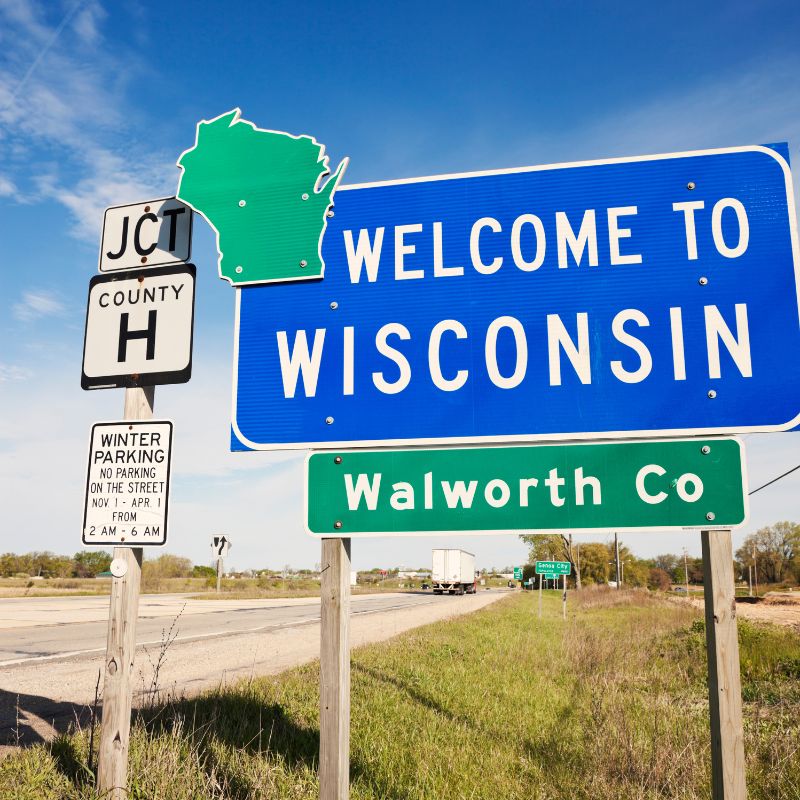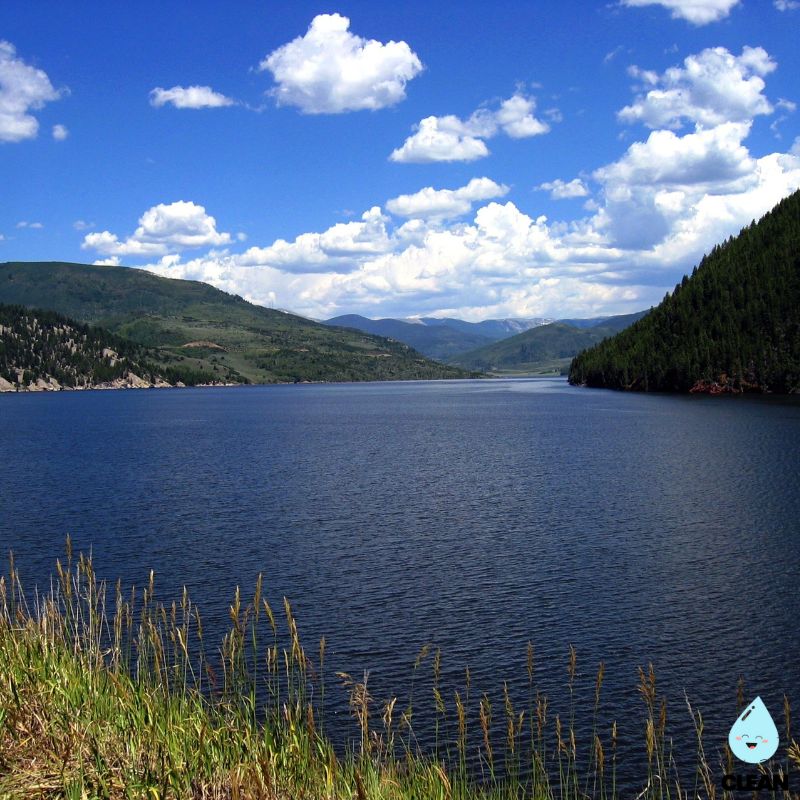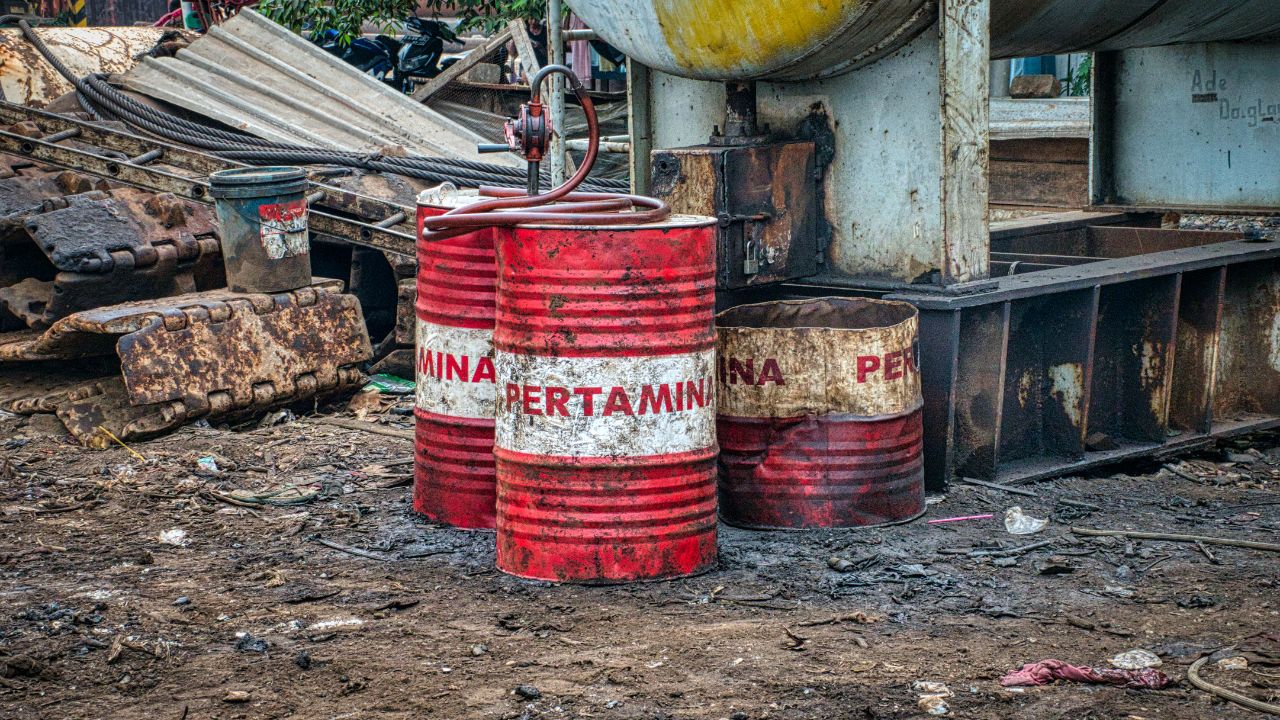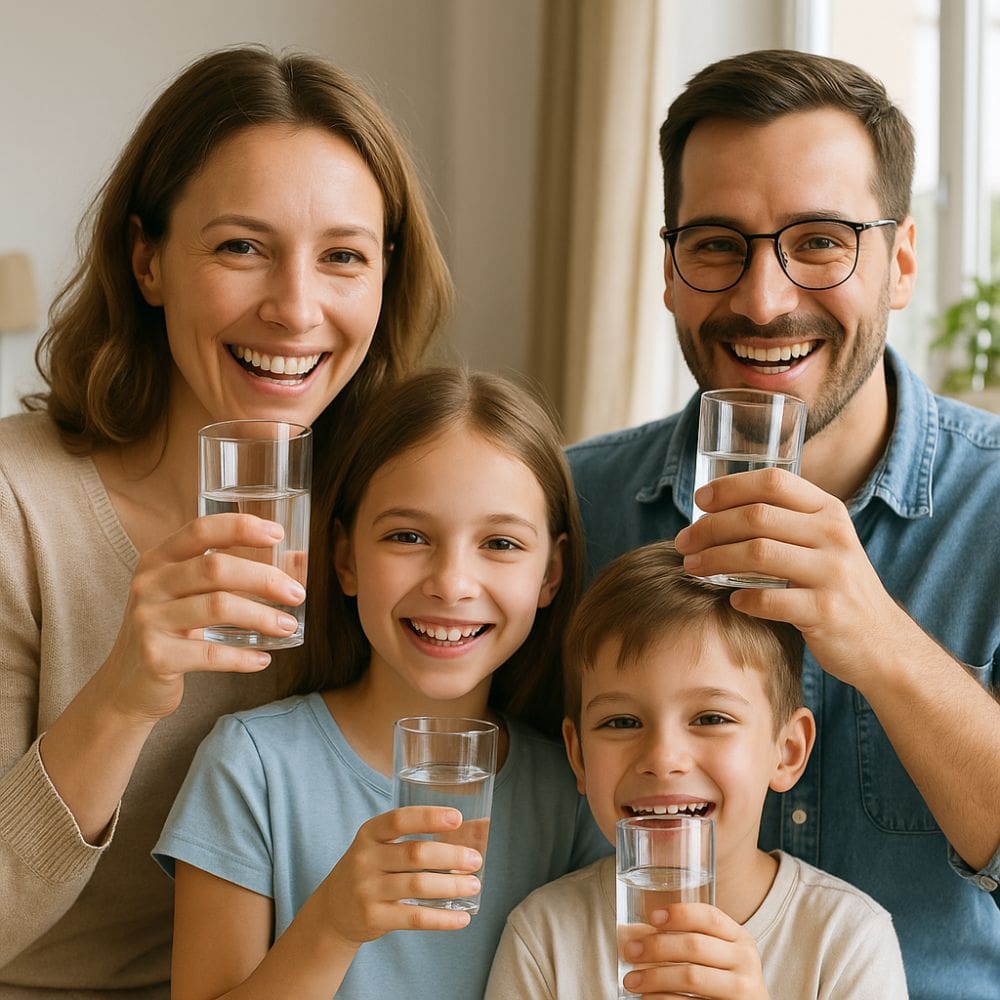Wisconsin Water Quality at a Glance
infrastructure challenges
Is Wisconsin Water Safe to Drink?
Generally Safe with Local Concerns – Wisconsin has some of the best water quality in the nation, with over 90% of utilities earning Grade A ratings and more than 99% meeting federal standards. However, nitrates from agricultural runoff affect 10-30% of private wells in farming areas, and PFAS contamination has been detected in some communities. Infrastructure grades of C reflect aging distribution systems and the need for lead service line replacement in cities like Milwaukee.
⚠️ Key Concerns for Wisconsin Residents
- Agricultural Nitrates: 10% of private wells statewide exceed safety limits; up to 30% in heavily agricultural areas; linked to blue baby syndrome, thyroid issues, and cancer risks
- PFAS “Forever Chemicals”: French Island and other communities affected; 5% of public systems and 2% above health standards; ongoing testing and remediation efforts
- Aging Infrastructure: Lead service lines in Milwaukee and other cities; Grade C infrastructure rating; $273M in federal funding allocated for upgrades in 2024
- Private Well Vulnerability: One-third of residents rely on private wells with no required testing; agricultural runoff particularly affects rural communities
Read the full report below for detailed analysis, regional data, and actionable recommendations for Wisconsin residents.
Wisconsin – America’s Dairyland – Water Quality Report 2025: PFAS Testing, Infrastructure Concerns & Safety across your state
Wisconsin’s water infrastructure serves approximately 5.9 million residents through the nation’s most extensive public water system network, with over 11,200 public drinking water systems—more than any other state. Five percent of these are municipal systems that serve 95% of the entire state population, while thousands of smaller community systems provide essential services to rural areas. Wisconsin’s water sources include the Great Lakes, numerous inland lakes, and extensive groundwater aquifers that supply both urban centers and agricultural communities throughout the state.
Despite abundant freshwater resources, Wisconsin faces significant infrastructure challenges. According to the American Society of Civil Engineers’ 2024 Infrastructure Report Card, Wisconsin’s drinking water infrastructure received a C grade, highlighting aging systems, funding shortfalls, and emerging contaminant concerns including PFAS “forever chemicals.” The state has received over $456 million in federal infrastructure investments from the Biden-Harris Administration’s Bipartisan Infrastructure Law since 2022 to address these challenges, focusing on drinking water safety, wastewater treatment upgrades, and emerging contaminant removal. Wisconsin’s commitment to water quality improvement is demonstrated through partnerships between the Wisconsin Department of Natural Resources (DNR), local utilities, and federal agencies working to ensure safe, reliable water access for all residents.

Wisconsin Water Quality: Current Status (2024-2025)
Statewide Compliance and Testing
- Overall Compliance: Wisconsin maintains one of the highest water quality standards in the nation, with over 90% of the state’s public water systems receiving A grades for water quality and more than 99% meeting federal Safe Drinking Water Act standards.
- PFAS Monitoring: Wisconsin has implemented comprehensive PFAS testing requirements with drinking water standards for PFOA and PFOS at 70 parts per trillion combined, ahead of federal standards that take effect in 2029.
- Infrastructure Investment: Over $456 million in federal funding through the Bipartisan Infrastructure Law has been allocated to Wisconsin since 2022 for water infrastructure improvements, including over $83 million specifically for lead service line replacement.
Major Water Sources and Challenges
- Great Lakes Basin: Provides water to major population centers including Milwaukee and Green Bay, with documented PFAS contamination near airports and military installations requiring ongoing monitoring.
- Groundwater Aquifers: Primary source for most rural communities and many municipalities, facing challenges from nitrate contamination in agricultural areas affecting 10-30% of private wells and PFAS contamination near industrial sites.
- Infrastructure Needs: EPA estimates $11.8 billion is required over the next two decades to address aging water infrastructure, with municipal wastewater systems needing an additional $5.5 billion in upgrades.
Emerging Contaminant Response
- PFAS Regulation Implementation: Wisconsin’s drinking water standards for PFOA and PFOS (70 parts per trillion combined) are already in effect, with about 95% of utilities already meeting proposed federal health-based standards before federal requirements take effect in 2029.
- Treatment Technology Deployment: Cities like Wausau have implemented granular activated carbon filtration systems to remove PFAS, with Madison constructing Wisconsin’s first PFAS treatment system for Well 15.
- Comprehensive Monitoring: Wisconsin DNR’s PFAS Interactive Data Viewer provides public access to contamination locations, fish advisories, and cleanup status throughout the state.
Rural and Disadvantaged Communities
- Infrastructure Disparities: Smaller water systems face challenges with aging infrastructure and higher per-capita costs, with approximately one-third of residents relying on private wells with no required PFAS testing.
- Targeted Federal Support: Emerging Contaminant Grant programs from the Bipartisan Infrastructure Law provide funding specifically for smaller public water systems and disadvantaged communities not owned by government entities.
- Technical Assistance Programs: Wisconsin DNR provides enhanced technical support and grant programs to help smaller systems navigate complex regulatory requirements and secure funding for necessary improvements.
Looking Forward: 2025-2030
Wisconsin’s water quality landscape benefits from proactive state policies and substantial federal infrastructure investments, positioning the state as a national leader in water quality management. With about 95% of public water systems already meeting proposed EPA health-based standards for PFAS, Wisconsin is well-prepared for federal regulations taking effect in 2029. However, continued investment in aging infrastructure, particularly for rural systems and private wells affected by agricultural runoff, will be essential to maintain the state’s high water quality standards. The state’s commitment to transparency through comprehensive testing and public reporting, combined with innovative treatment technologies and strong regulatory oversight, ensures Wisconsin residents continue to have access to some of the nation’s safest drinking water.
Recommendations for Wisconsin Residents

Know Your Water Source
Contact your water utility to request annual water quality reports and check Wisconsin DNR’s PFAS Interactive Data Viewer to see if PFAS has been detected near you. For private wells, consider testing through Wisconsin-certified laboratories.

Support Infrastructure Investment
Stay informed about local water infrastructure needs and support utility rate structures that enable necessary improvements. Attend public meetings when utilities discuss infrastructure upgrades and PFAS treatment investments.

Consider PFAS-Certified Filtration
For areas with known PFAS contamination, consider NSF-certified activated carbon or reverse osmosis filters specifically tested for PFAS removal. Use Wisconsin’s PFAS Assessment Tool to evaluate risk levels in your drinking water.

Report Water Quality Concerns
Contact your local water utility immediately for taste, odor, or color concerns. Report suspected contamination to Wisconsin DNR’s Environmental Compliance Division for investigation and follow-up.

Practice Water Conservation
Support Wisconsin’s water sustainability by implementing conservation measures like efficient irrigation, rainwater harvesting, and low-flow fixtures. Reducing demand helps utilities maintain system reliability and affordability.
Wisconsin Cities We Cover
Madison Water Quality
Comprehensive analysis of Madison Water Utility, serving Wisconsin’s capital city. Includes information on water sources, treatment processes, infrastructure modernization, and PFAS monitoring including the state’s first PFAS treatment system.
Milwaukee Water Quality
Detailed assessment of Milwaukee Water Works, Wisconsin’s largest water utility serving over 800,000 customers. Covers water quality testing, Great Lakes water treatment, and infrastructure modernization efforts in the state’s most populous city.
Frequently Asked Questions
Is Wisconsin’s tap water safe to drink?
Wisconsin maintains some of the highest water quality standards in the nation, with over 90% of public water systems receiving A grades for water quality.
The Wisconsin Department of Natural Resources requires comprehensive testing across all public water systems. More than 99% of Wisconsin’s public water systems meet federal Safe Drinking Water Act standards. About 95% of Wisconsin’s public water systems already meet proposed EPA health-based standards for PFAS. Wisconsin has implemented state PFAS standards ahead of federal requirements, and water utilities are implementing advanced treatment technologies. The state has received over $456 million in federal funding since 2022 to address emerging contaminants and infrastructure needs. Residents should review their utility’s annual water quality report and utilize Wisconsin’s PFAS Interactive Data Viewer to stay informed about local conditions.
What are PFAS chemicals and why are they a concern in Wisconsin?
PFAS (per- and polyfluoroalkyl substances) are synthetic “forever chemicals” that have contaminated water sources near military bases, airports, and industrial sites throughout Wisconsin.
Wisconsin has documented PFAS contamination in communities like Marinette, Peshtigo, Madison, and areas near airports including French Island near La Crosse. University of Wisconsin-Madison researchers have linked toxic PFAS contamination in Lake Michigan’s Green Bay to industrial sources like Tyco. These chemicals have been linked to cancer, liver damage, immune system effects, and other health concerns. Wisconsin implemented drinking water standards for PFOA and PFOS at 70 parts per trillion combined in 2022, ahead of federal standards taking effect in 2029. The state provides comprehensive monitoring data through its PFAS Interactive Data Viewer and requires all municipal utilities to test for these contaminants.
How can I find out about my local water quality?
Wisconsin residents can access comprehensive water quality information through several resources:
• Annual Water Quality Reports: Contact your water utility directly for their Consumer Confidence Report, which details all testing results and any violations or concerns
• Wisconsin DNR PFAS Interactive Data Viewer: Use your location to search for PFAS contamination, fish advisories, and cleanup status in your area
• Wisconsin Waterworks Excellence Project: View report cards for 570 municipal water utilities with letter grades for water quality, infrastructure, finance, and communications
• Private Well Testing: For the one-third of Wisconsin residents using private wells, consider testing through Wisconsin-certified laboratories and use the PFAS Assessment Tool to evaluate risk levels
Why does Wisconsin have water infrastructure challenges?
Despite high water quality, Wisconsin faces infrastructure challenges due to the sheer scale of its water systems:
System Complexity: Wisconsin has more public drinking water systems (over 11,200) than any other state, making coordination and upgrades challenging
Funding Needs: The EPA estimates $11.8 billion is required over the next two decades to address aging water infrastructure, with municipal wastewater systems needing an additional $5.5 billion
Climate Impacts: Wisconsin’s extreme temperature fluctuations cause main breaks and infrastructure stress, particularly affecting cities like Milwaukee
Rural System Challenges: Smaller water systems and private wells face higher per-capita costs and limited technical capacity for complex treatment technologies
The state is addressing these challenges through federal infrastructure investments, improved regulatory oversight, and innovative partnerships between utilities and government agencies.
Quality News About Your Water
Get the comprehensive water quality news coverage you need with our dedicated US Water News Service. From coast to coast, we deliver in-depth reporting and expert analysis on PFAS contamination, EPA regulatory changes, infrastructure developments, and emerging water safety issues affecting communities nationwide. While mainstream media only covers the biggest stories, we provide the detailed, ongoing coverage that helps you understand the full scope of America’s water challenges. Whether you’re a concerned citizen, water professional, or community leader, our daily updates and analytical insights keep you informed about the issues that matter most to public health and environmental safety.
Contaminants of Concern

PFAS “Forever Chemicals”
Source: Military bases, airports, firefighting training areas, and industrial manufacturing sites including former Tyco facilities near Green Bay and sites in Marinette and Peshtigo
Health Effects: Linked to kidney and testicular cancer, liver damage, immune system suppression, high cholesterol, and developmental effects in children
Current Status: About 95% of Wisconsin public water systems meet proposed EPA health-based standards, with state standards already in effect at 70 parts per trillion for PFOA and PFOS combined Wisconsin Standards: 70 ppt for PFOA and PFOS combined, ahead of federal 4 ppt standards taking effect in 2029

Agricultural Runoff Contaminants
Source: Nitrates from agricultural fertilizers, pesticides, and livestock operations affecting groundwater aquifers, particularly in areas with intensive dairy and crop farming
Health Effects: Nitrate contamination can cause methemoglobinemia (blue baby syndrome) in infants, while pesticide residues may have long-term health impacts including endocrine disruption
Current Status: Ongoing monitoring of private wells in agricultural areas, with enhanced treatment at affected public water systems and source water protection measures Regulatory Response: Wisconsin DNR oversight and agricultural best management practices to reduce contamination sources
Please read – our information
The information presented on cleanairandwater.net is compiled from official water quality reports, trusted news sources, government websites, and public health resources. While we strive for accuracy and thoroughness in our presentations, we are not scientists, engineers, or qualified water quality professionals.
Our mission is to present water quality information in an accessible, real-world format that helps people understand what’s in their water and make informed decisions about their health and safety. We believe that complex environmental information should be available to everyone in a format that’s easy to understand.
We make every effort to ensure our content is current and accurate, but we cannot guarantee that all information is complete or error-free. This website should not replace official communications from your local water utility or health department. We always recommend consulting official sources for the most up-to-date information regarding your specific water system.
Clean Air and Water is not liable for any unintentional errors, omissions, or outdated information. The content on this site is provided for informational purposes only and should not be considered professional advice.


